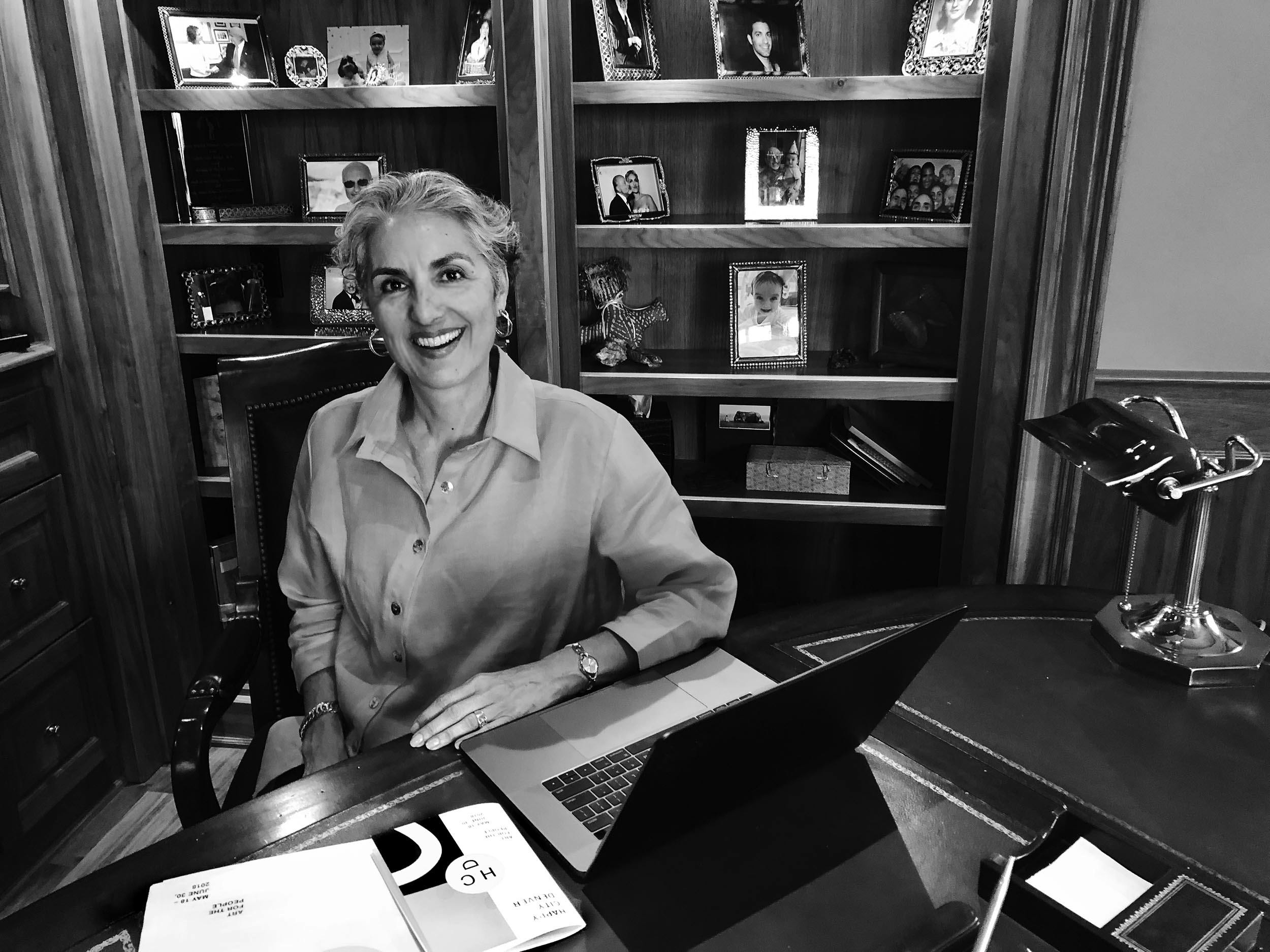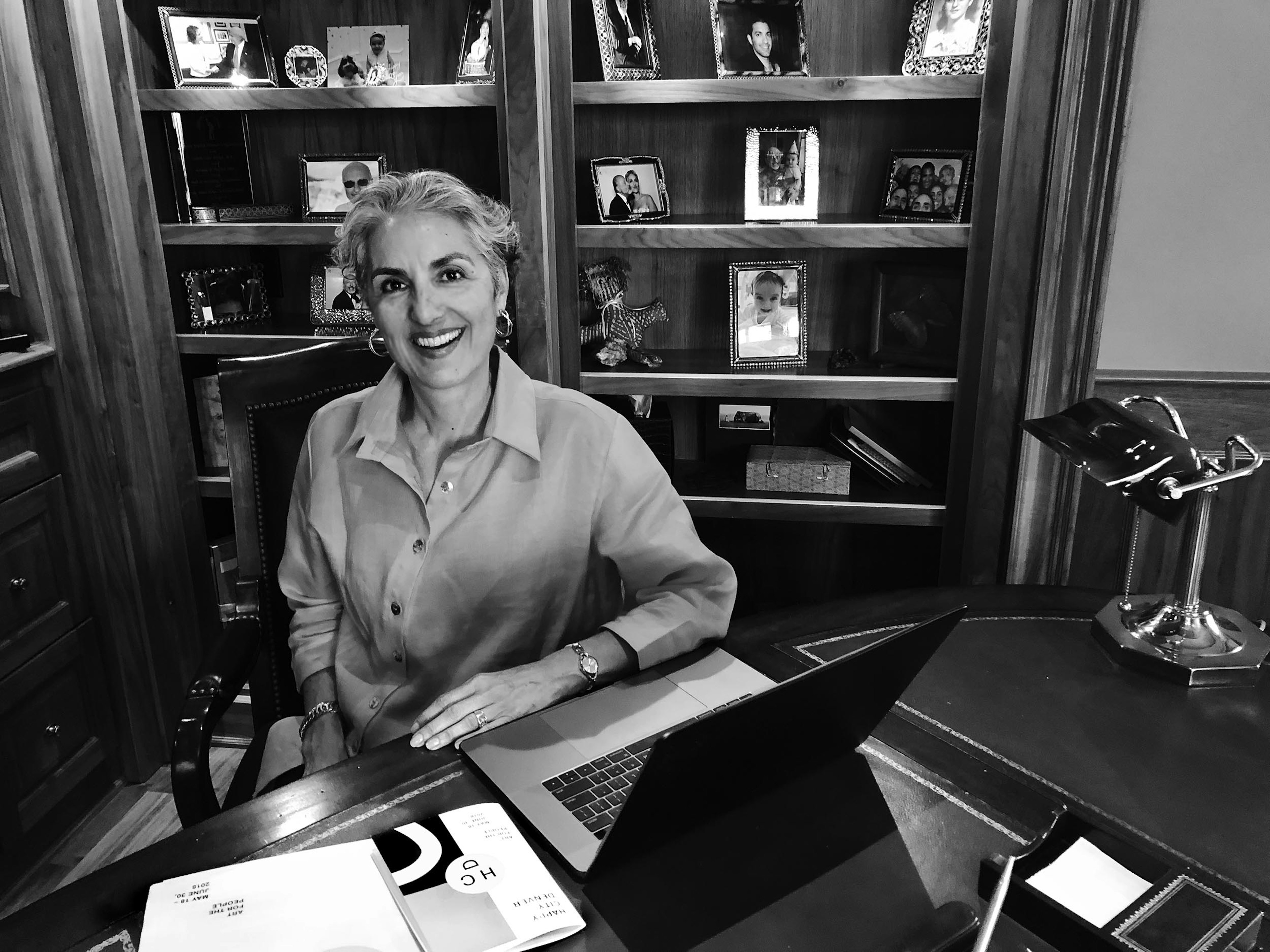Interview w/ Black Cube’s Founder Laura Merage


Laura Merage is an artist, philanthropist, and the Founder of Black Cube. For over a decade, she has made a profound impact on Denver’s visual arts community, including launching RedLine Contemporary Art Center in 2008.
Interview w/ Black Cube’s Founder Laura Merage
Black Cube: Can you tell us a little bit about how you initially became interested in art?
Laura Merage: Going to school in Iran was very difficult for me. By their standards, I wasn’t a good student and teachers were very harsh. In 5th grade, I had an art teacher who introduced me to art, which planted the seed. She really cared and enjoyed teaching, and honestly it was the only class that I enjoyed.
When I moved to the U.S. and started high school, I was lucky enough to have another great teacher who taught watercolor. Even though I wasn’t very good at it, it was fun. Then, I had a teacher who taught ceramics, and I wasn’t too bad.
In college, I began to take art classes. As an introvert, art-making became my world. I would spend hours in the studio painting or making sculptures. I realized that this was a strong way for me to connect and communicate with people. My last year of college, I took a photography class and fell in love. The processes - taking images, developing, working in the darkroom - became a tool for me to communicate in a way I couldn’t with words.
BC: What motivated you to found Black Cube?
LM: When I found out that more than 90% of people in the U.S. have not walked into a gallery or museum, I was shocked. I felt that we needed a shift in the art world, an innovative idea, or a new way to show art to the public. I feel that we need to take art directly to the public, instead of making the public go to where art is generally exhibited; therefore… the nomadic museum. In that way, Black Cube has helped not only the public have more encounters with art, but has also encouraged artists to think differently and construct art using a new lens.
BC: What most excites you about Black Cube’s future?
LM: The fact that there is absolutely no limit, that from day to day it can be a very different organization, and that each installation can be so very unique, depending on the creativity of artists and their ideas.
BC: Can you share an important experience that you have had with art?
LM: The first time I saw Rothko. I saw his painting in person at the MOMA in New York. I was standing there in front of the painting and tears started rolling down my cheeks. I was so shocked that I touched my face, asking myself, “am I really crying?”. To this day, I can’t tell you exactly why I had that reaction. I was standing in front of the painting, thinking about something else, while simultaneously staring at the painting. As I was staring at it, I went into a trance, with the painting becoming all that I could see. It became alive, drawing me in further and further.
BC: You also founded RedLine Contemporary Art Center in Denver. Can you explain what it takes to be the founder of such an organization?
LM: As an artist, I was so frustrated with not being able to share my art with others. How do you get picked up by a gallery? How do you exhibit your work in an exhibition? I realized there was a need for something that is not only a gallery or a school, but a place where artists can show their work, have exhibitions, and get support. This is how RedLine came about. People doubted me along the way, but I could see it.
I looked for over two years to find an area and a building that fit the bill to what I was envisioning. RedLine continues to give me lots of satisfaction and joy when I see how many lives it has touched. So many people are moved by what they see and experience there.
BC: What is the main skill that you have you used in founding nonprofit organizations?
LM: The number one skill I have used is perseverance. Often people think that someone imagines something, then they put money towards it, and it happens. First, you have to have the vision, then you have to have perseverance. There have been many mistakes, many unanswerable challenges, and many dead ends along the way. Yet, you have to persevere by finding other routes to reach the desired outcome. There were so many people that told me my vision for RedLine was too “all over the place”. That you can’t have art, education, and community woven together, but I said “no”. It’s important to educate people about art, so that they can appreciate it. We also need to educate children because the arts are continuously being cut in schools; they are the ones that will one day appreciate, produce, and buy art. You need to have a center like RedLine so that we can keep artists in Denver and they don’t feel like they have to go to other cities to find careers.
BC: You are a board member at the Anti-Defamation League (ADL). Does your work at the ADL inform your thinking with the arts organizations you founded?
LM: Being a Jewish woman living in a Muslim country is very difficult. Even though I had a good childhood, it was a difficult one. I was not accepted for who I was within society. As a child and through my teenage years, I always felt like the “other”. So, when I came to Denver 22 years ago, I very quickly got involved in ADL.
My work with the ADL is in line with my aspiration to support underrecognized voices and also to empower people to stand on their own solid ground. This goes hand in hand with the ADL’s vision to respect inclusion and to challenge bias. This desire to help others to be better and stronger has interwoven within my art practice as well.
Within me, there is a duality of “to heck with that, I want to speak my truth,” and another part that thinks about others, of the harm that can be done without being sensitive.
BC: Advice for artists?
LM: Don’t be afraid to showcase your art or to market your art. The notion of starving artists is a fallacy and not a good one to buy into. Don’t be afraid of success. Re-educate yourself.
Selling your art, you must absolutely find different ways. Turn it on its head, don’t give up – be stubborn. Find innovative ways of marketing, putting your work out there, talking about your work – being able to talk about the work is important. I don’t buy into the fact that viewers should just look at the work and automatically understand it.
Thank you, Laura!
